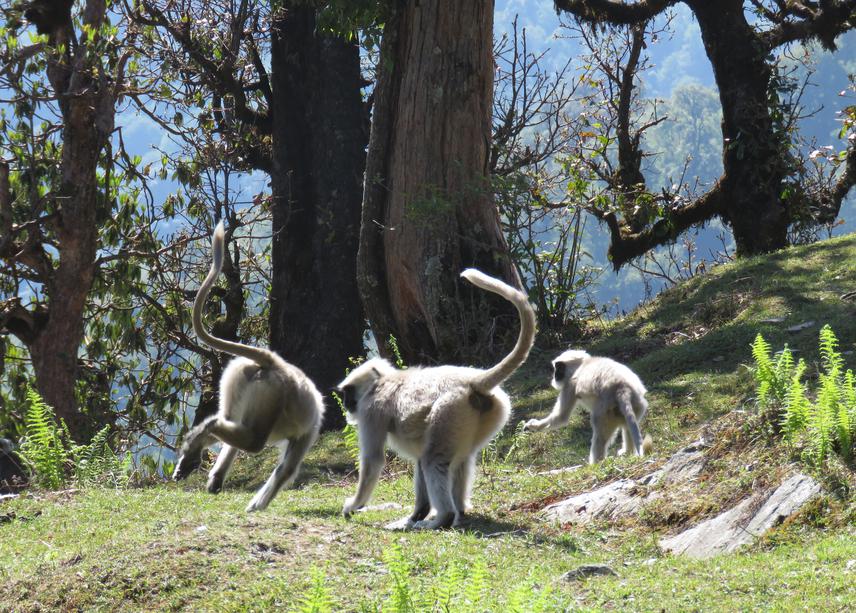Subhajit Saha
The project aims to assess the prevailing human-nonhuman primate conflict in the Askot Landscape of the Western Himalayas, India, in a comprehensive manner. The assessment will guide to prepare strategies for mitigation of such conflicts, together with educating people on the various associated issues, which will lead to primate conservation in the area.

Himalayan langurs (Semnopithecus schistaceus) running away from farmland. © Subhajit Saha
Background: In an increasingly human modified world the wild animals are facing various anthropogenic survival challenges, including human-wildlife conflict. Phenomena like hunting, crop-raiding, confrontation, disease transmission etc. are gradually becoming common; adversely affecting the species which are in need of conservation. Nonhuman primates, especially those living near humans, are particularly vulnerable to these issues. As their natural habitats are steadily getting encroached upon, resulting into shrinkage, fragmentation, and food-shortage, they are coming into frequent contacts with humans. The Askot Landscape is such an area where severe human-nonhuman primate conflict exists, with no scientific assessment till date. It is home to three co-existing nonhuman primate species; Himalayan langur (Semnopithecus schistaceus), rhesus macaque (Macaca mulatta), and Assamese macaque (Macaca assamensis); all of which are known to be associated with conflicts. The Assamese macaque in Askot has a restricted occurrence and is in need of conservation.
Study area: The Askot Landscape (30.5833°N – 29.5833°N, 80.1667°E - 81°E) comprises the region between two Himalayan rivers, namely, the Gori and the Kali, in the Pithoragarh district of Uttarakhand state, India. It is a vast mountainous expanse (approx. 4463 sqkm), and borders Nepal to the east (Kali river is the boundary), Tibet to the north, Nanda Devi Biosphere Reserve to the west, and the south-western boundary of the region is defined by the Gori river. A superb Himalayan landscape having sub-tropical to alpine ecosystems, Askot supports many rare, threatened and endemic flora and fauna. The regionally important site is home to about 47% of the western Himalayan orchids (especially the Gori basin) and many enigmatic animals including satyr tragopan, monal, cheer pheasant, Himalayan tahr, bharal, and Himalayan black bear. The landscape includes one wildlife sanctuary (Askot WLS), an Important Bird Area (IBA/IN099), and an Important Plant Area (IPA/10/CIH).
Aims: The project proposes to evaluate the existing human-nonhuman primate conflict in the Askot Landscape by rural surveys to assess the conflict issues, mapping the conflict-areas through community involvement to identify conflict-prone zones, developing mitigation measures through participatory approaches, and motivating local people towards primate and nature conservation through outreach and capacity-building activities. The anthropogenic threats to nonhuman primates in the area, when substantially understood, will form the essential background on which steps could be taken while devising strategies for primate conservation, especially that of the Assamese macaque, in the region.